Footy, also known as Aussie Rules or the AFL, is a highly popular domestic sports league per capita. In 2017, the AFLW, a significant addition to the Aussie Rules landscape, was founded and formalised by the AFL, marking a new era of inclusivity and growth in the sport.
The rules are mostly the same as those of the men's game, but here, we'll discuss everything you need to know about footy rules and how the women's game differs.
Ready for the centre bounce?

Aussie Rules Objectives
For those new to footy, understanding the rules and objectives goes a long way to being able to appreciate the sport.
Like many ball sports, the objective is to get the ball to a specific area of the ground, such as the goal in soccer, the net in basketball, the endzone in American football, and the in-goal area in rugby.
There are posts on each side of a footy ground, two taller posts towards the centre and a shorter post on the outside of each taller post.
Scoring Goals
In footy, the thrill of scoring a goal worth six points comes when you kick the ball between the two tallest posts. It's a moment of victory and celebration for the team.
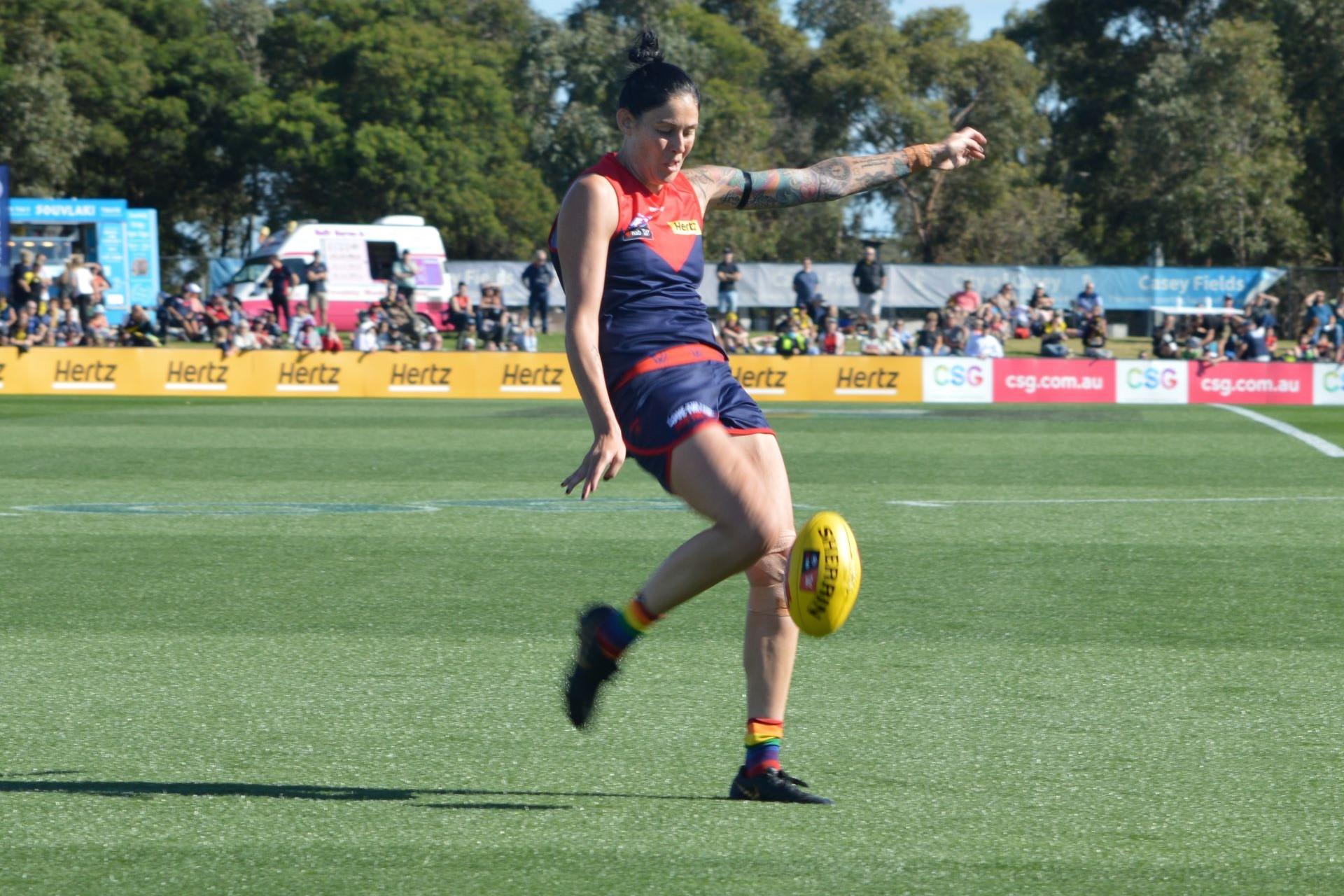
Behinds
If the ball hits one of the taller posts or goes between a taller post and one of the shorter posts alongside it, this is known as a "behind" and is worth one point.
Reading the Score
In Aussie rules, the score is typically denoted by goals, behinds, and total score. You'll either see this written like this:
- West Coast 3.7 (25)
- Essendon 6.5 (41)
In this example, West Coast scored 3 goals (18 points) and 7 behinds (7 points) for 25 points. Essendon scored 6 goals (36 points) and 5 behinds (5 points) for 41 points.
Essendon won this match.
On TV, you'll see the score written in this order. However, the goals, behinds, and total score will likely be in separate boxes or separated by hyphens, but they'll be in the same order.
Goal: 6 points
Behind: 1 point
The AFLW Playing Field
One of the unique aspects of footy is that it's played on an oval field rather than a rectangular one, as in soccer, rugby, American football, etc.
The grounds range between 135 and 185 metres from goal to goal and 110 to 155 metres from wing to wing.
There are the four posts at either end of the ground that we mentioned earlier.
You'll likely notice the curved lines towards each end of the ground. These 50-metre arcs dictate starting positions for players during the centre bounce, which is how play is started at the beginning of the game or following a goal.
A 50-metre square with two concentric circles in the centre of the ground indicates players' starting positions for the centre bounce.
The 6.4 metre by 9 metre square by the goals is used to restart play following a behind.
As the field is an oval, much like in cricket, you'll find that most stadiums used for the AFLW and the AFL are used by Australian cricket teams outside of the footy season.
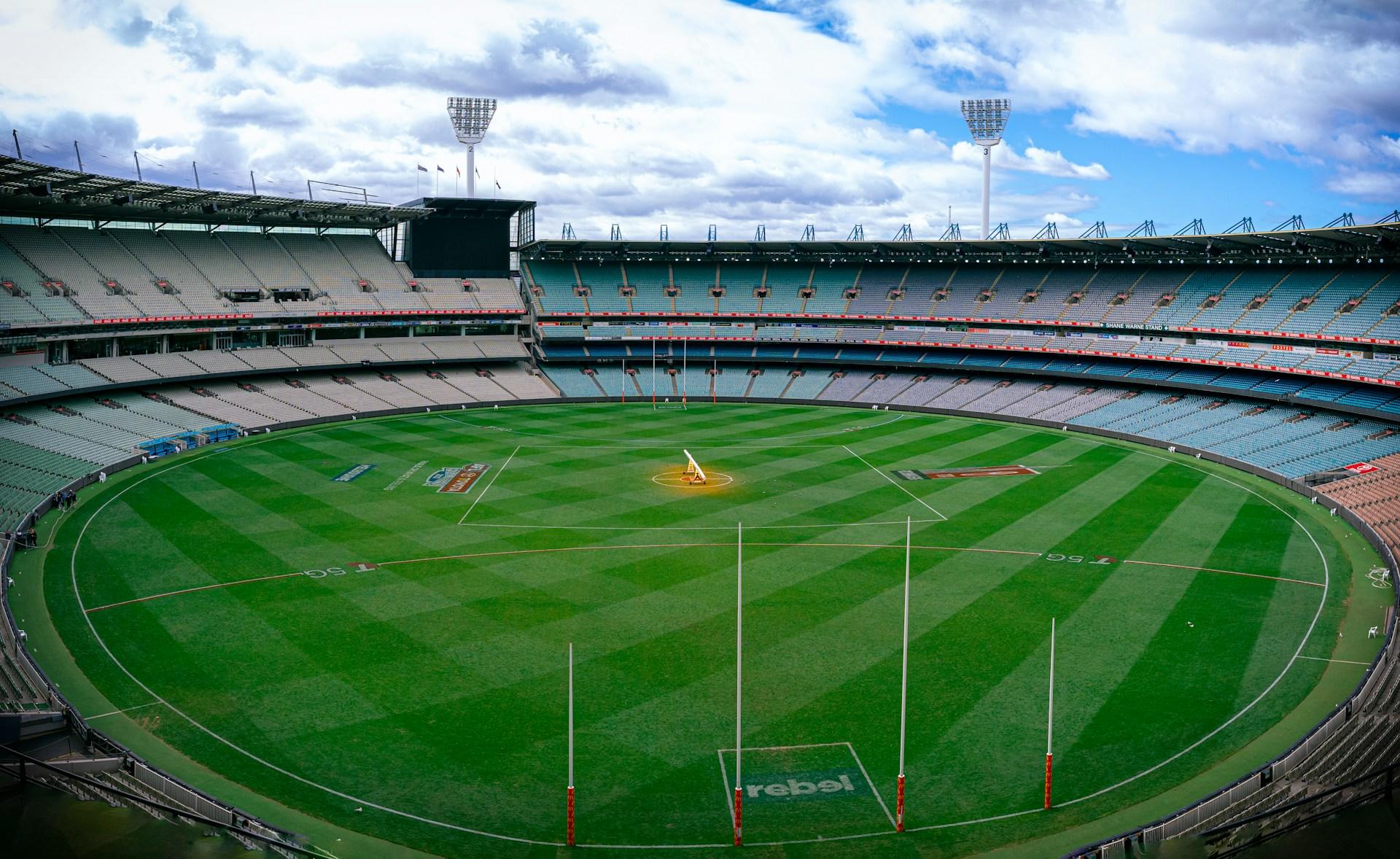
After all, footy was initially invented in Melbourne to keep cricket players fit during the winter when you can't play cricket.

Footy Equipment and Uniforms
So what's needed to play a game of footy?
The Football (Sherrin)
Footy, or Aussie rules, is played with an oval or egg-shaped ball. You may hear this called a "Sherrin", simply the name of the company famous for making the balls.
In the AFLW, the game is played with a “size 4” ball.
Guernsey
The guernsey /guhn·zee/ is the top worn by AFLW players. It is typically a sleeveless top like you'd see in basketball. However, unlike basketball, these guernseys are made of tougher material as they need to be appropriate for the heightened physicality of Aussie rules, complete with tackles, hits, etc.
Unlike in other sports, players don't sport their names on their guernseys; they only have their number.
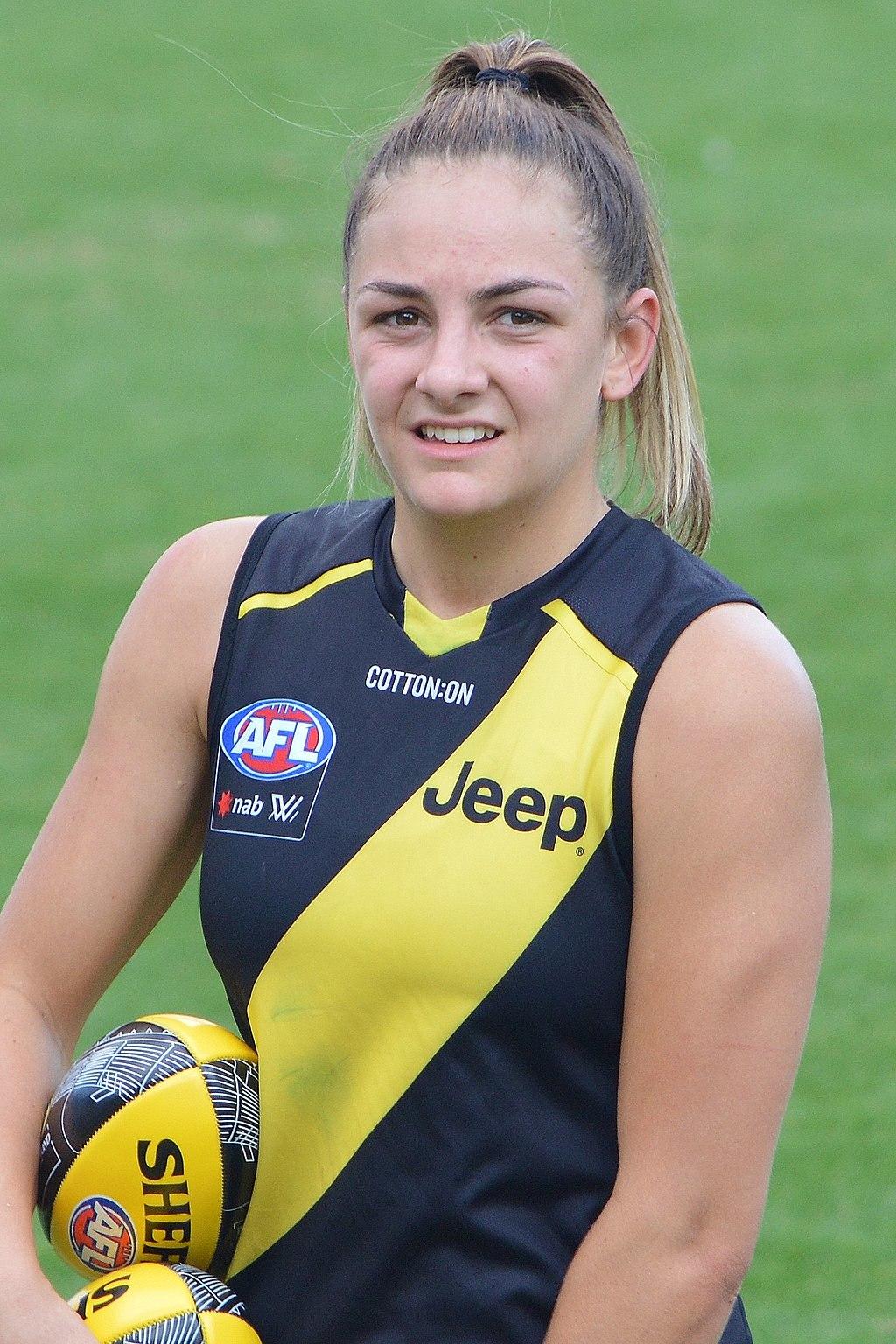
Shorts
In the AFL, the home team usually wears dark shorts, and the away team wears white shorts. However, in keeping with many other women's sports, the AFLW has removed white shorts from the game and other female competitions.
This is to reduce the anxiety felt by players during their menstrual cycle, particularly for younger girls getting into the game, and to combat what has been called “period stigma”.
Socks
In footy, the socks typically match the colour of the teams' guernseys.
Boots (Cleats)
Football players wear boots with screw-in or moulded studs, which are similar to the kinds worn by soccer players.
Protective Gear in Aussie Rules
Despite how violent footy can look, players are almost not required to wear protective gear. However, you will see players sporting specific protective equipment.
Mouthguards, for example, are quite commonly worn by players to protect their teeth.
If you see players wearing gloves, it's usually for grip on the ball in tricky conditions.
Players can also wear shoulder pads and rib protectors, but these are typically very light and flexible and do not impede movement. They're far from the protective gear you'd see in a sport like American football or ice hockey.
Lighter helmets like those worn in rugby are sometimes worn. These are usually worn by players returning from a head injury rather than the standard equipment worn by players.
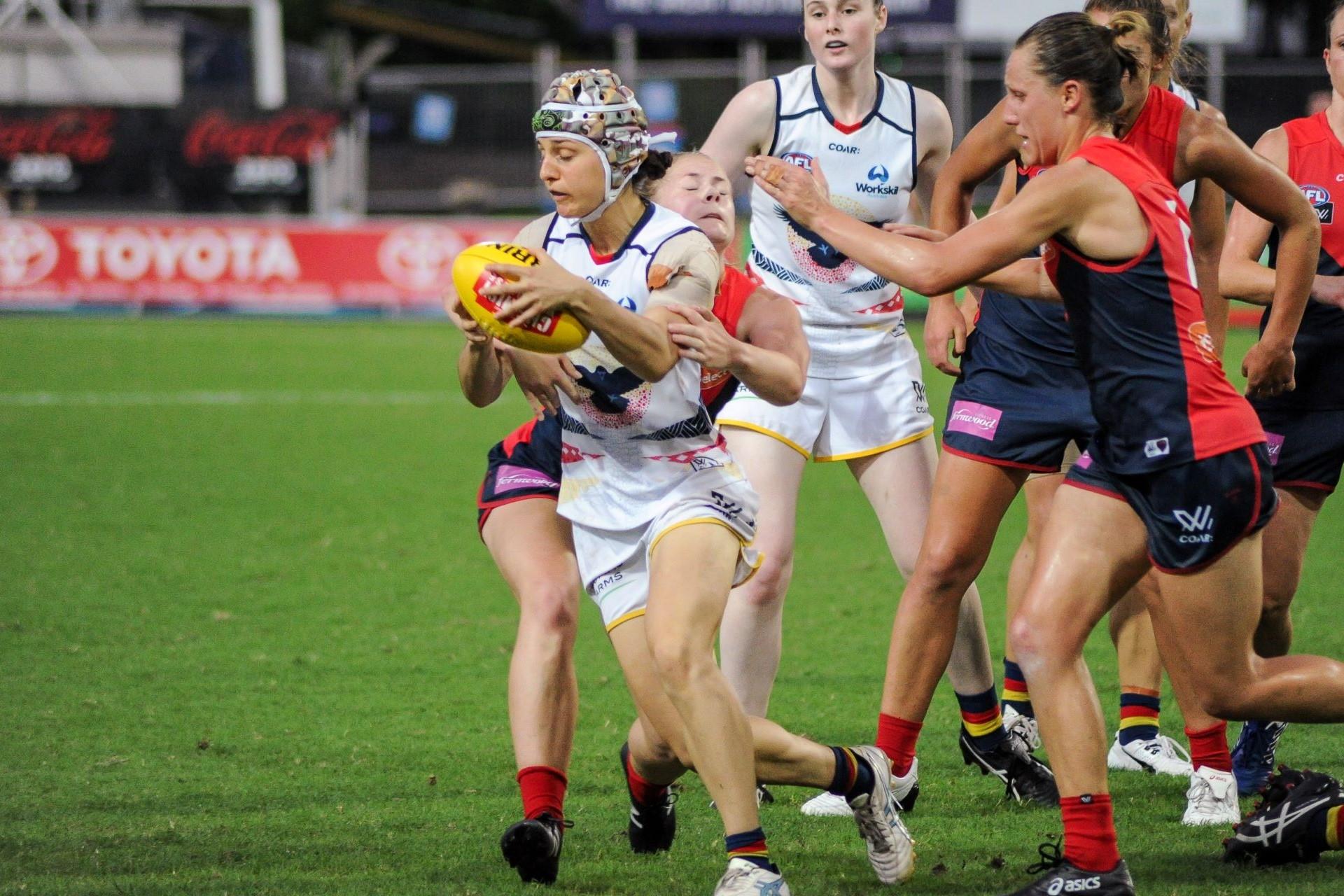
Footy Teams in the AFLW
Now you know where they play, what they use, and what the main objective of footy is, who's playing footy?
Each team has 18 players and four interchange players that can be freely interchanged throughout a footy match.
There are also 18 teams in the AFLW:
- Adelaide Crows
- Brisbane Lions
- Carlton Blues
- Collingwood Magpies
- Essendon Bombers
- Fremantle Dockers
- Geelong Cats
- Gold Coast Suns
- Greater Western Sydney (GWS) Giants
- Hawthorn Hawks
- Melbourne Demons
- North Melbourne Kangaroos
- Port Adelaide Power
- Richmond Tigers
- St Kilda Saints
- Sydney Swans
- West Coast Eagles
- Western Bulldogs
In 2017, the AFLW started with just eight teams but quickly and regularly expanded to include every AFL team, but the history of women's footy goes back much further than the 2010s.
How to Play Aussie Rules
Footy is called Aussie Rules specifically for its unique rules, unlike any other sport.
To understand these rules, consider that there is an attacking team (the team currently in possession of the ball) and a defending team.
Unlike in American football, there aren't distinct attacking and defending periods of play. Aussie rules teams play more continuously with fewer stoppages.
Moving the Ball as the Attacking Team
When you have the ball in footy, you can move it around the ground in three ways: kicking, handballing, or running.
Like in rugby or American football, players can run carrying the ball in their hands. However, similar to basketball, they can't run as much as they'd like with the ball in their hands. Footy players must bounce or touch the ball to the ground every 15 metres. This is much trickier with an egg-shaped ball than a basketball.
Footy players can also handball. A player passes to a teammate by punching the ball out of their hand with their other hand.
Kicking has more rules attached to it in footy, but players can make passes by kicking the ball to a teammate.
For passes over 15 metres, if the player cleanly catches the ball, it's known as a mark. When this happens, the receiving player can “play on”, choosing to run with the ball or handball. Otherwise, they are given the chance to take an unimpeded kick. The referee will blow the whistle to indicate a successful mark.
Marks are an exciting part of Aussie rules, mainly when a mark is a "speccy" or a "spectacular mark". This is when a player leaps high into the air to catch the ball, using opponents to get even higher into the air, which is completely legal. In this case, the opposing player is sometimes called the stepladder or springboard.
A "Spectacular mark" is one of the most exciting parts of footy, with players jumping into the air, using their opponents to make even higher catches.
While the best players in the AFLW will do this, there's more to enjoy out of each match than speckies.
Defending in Footy
The team without the ball is trying to stop the other team from scoring and regain possession of the ball.
A team can defend in four ways: tackling, bumping, smothering, or spoiling.
- Tackling is similar to rugby, and the tackling player must tackle between the shoulders and knees of their opponent. No high or low tackles are allowed.
- Bumping is using one's body to hit another player. Players usually use their hips or shoulders to do this, similar to ice hockey.
- Smothering is when a player attempts to block an opponent's kick. This usually involves well-timed leaps at the opponent's feet or into the ball's path, blocking the ball with their hands, arms, or upper body.
- Spoiling is a way to intercept a kick by punching the ball away from the mark.
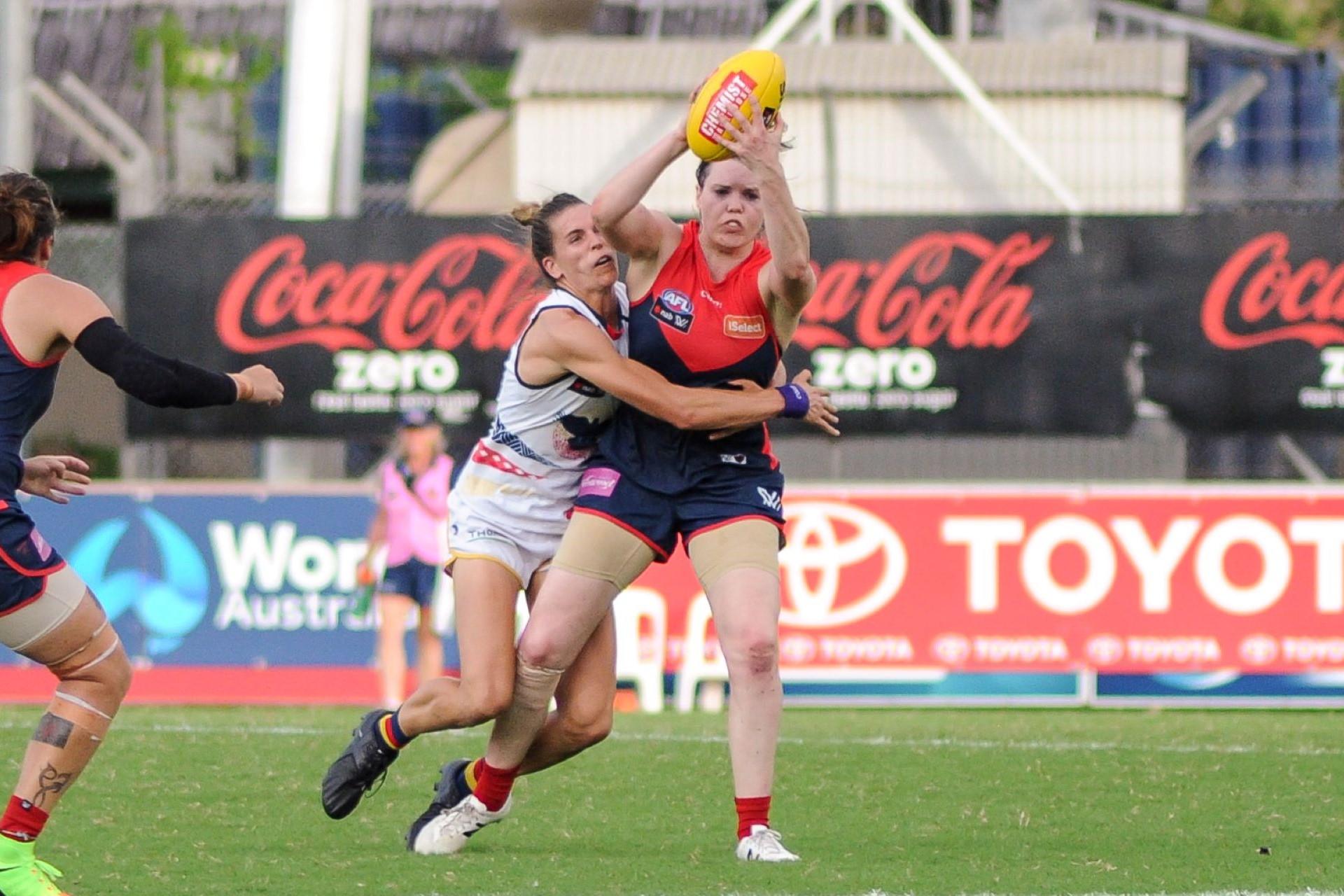
The Key Differences Between the Women's Game and the Men's Game
For almost every practical purpose, the rules for footy are the same whether you're watching the AFLW or the AFL.
Match Duration
While an AFLW match consists of four 15-minute quarters plus stoppages, the men's game is divided into four 20-minute quarters plus stoppages.
In practice, this means the quarters in the AFLW typically last between 18 and 20 minutes. In contrast, the quarters in the AFL usually last between 27 and 30 minutes.
Ball Size
The ball used in the AFLW is a size 4, the same size used by youth players. In the men's game, the ball is size 5.
Other Differences
The grounds are typically the same size, though sometimes, smaller grounds are used in the AFLW due to venue availability.
Both AFLW and AFL field 18 players on each team and any on-field differences in play are usually due to the size and physicality of the players, which will differ from match to match according to the teams fielded.
















Hey Joseph – this is a great article, written in an interesting and engaging style. Well done.